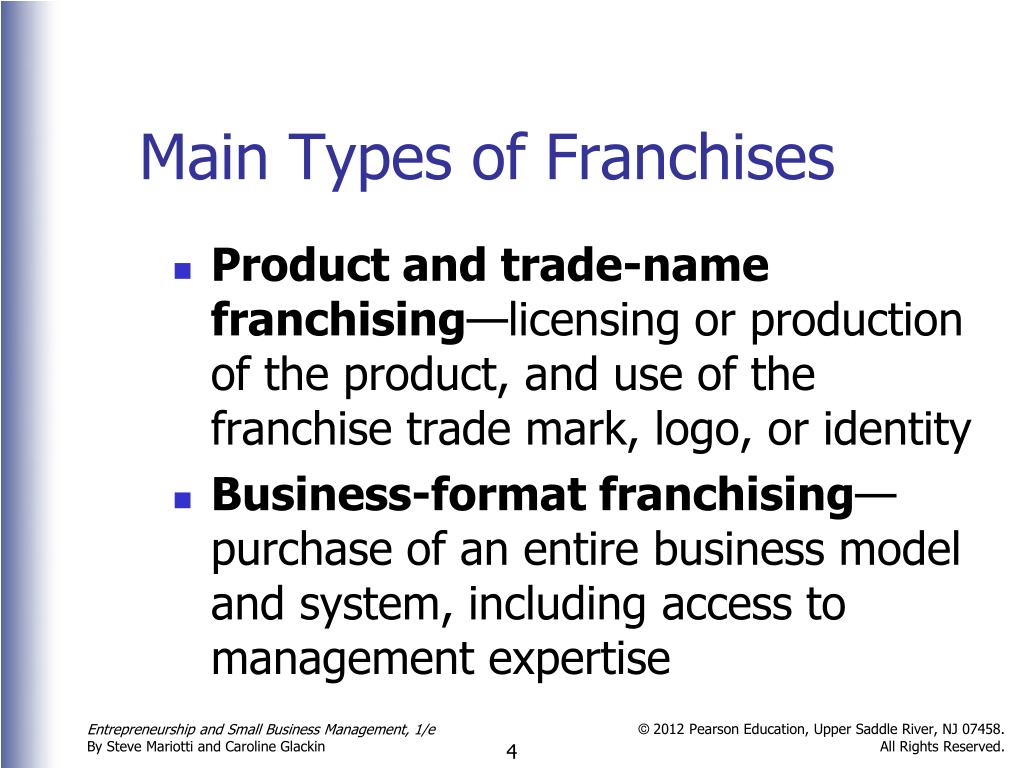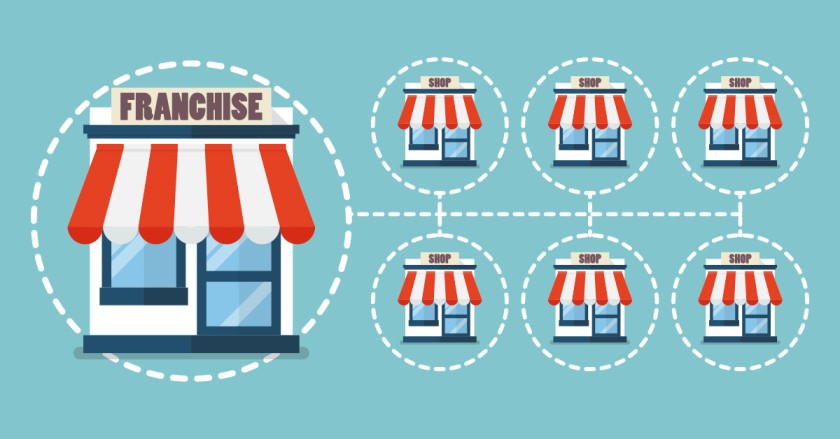Table of Contents
ToggleWAYS OF EXPANDING A BUSINESS:
- Franchising: Franchising involves granting another party the right to operate a business under your brand and using your established business model.
- Joint Ventures: A joint venture involves partnering with another company to create a new business entity.
- Distributorship: Distributorship involves partnering with another company to distribute your products or services to a wider market.
- Organic growth: Growing your business through internal means, such as increasing sales, expanding your product or service offerings, or entering new markets.
FRANCHISING
Franchising involves granting another party the right to operate a business under your brand and using your established business model.
A franchise is the agreement or license between two legally independent parties which gives:
- A person or group of people (franchisee) the right to market a product or service using the trademark or trade name of another business (franchisor).
- The franchisee the right to market a product or service using the operating methods of the franchisor.
- The franchisee the obligation to pay the franchisor fees for these rights.
- The franchisor the obligation to provide rights and support to franchisee.
FRANCHISOR
| FRANCHISEE
|

TYPES OF FRANCHISES
There are two main types of franchises:
- Product distribution.
- Business format.
Product distribution franchises simply sell the franchisor’s products and are supplier-dealer relationships. In product distribution franchising, the franchisor licenses its trademark and logo to the franchisee but does not provide them with an entire system for running their business.
Business format franchises, on the other hand, not only use a franchisor’s product, service, and trademark but also the complete method to conduct the business itself, such as the marketing plan and operations manuals. Business format franchises are the most common type of franchise.
TYPES OF FRANCHISE ARRANGEMENTS/AGREEMENTS
These arrangements define the relationship between the franchisor (the owner of the business concept) and the franchisee (the individual or entity purchasing the rights to operate a franchise).
Two types of franchising arrangements:
- Single-unit (direct-unit) franchise
- Multi-unit franchise
Single-unit (direct-unit) franchise is an agreement where the franchisor grants a franchisee the rights to open and operate ONE franchise unit. This is the simplest and most common type of franchise.
Multi-unit franchise is an agreement where the franchisor grants a franchisee the rights to open and operate MORE THAN ONE unit.
There are two ways a multi-unit franchise can be achieved:
- An area development franchise
- A master franchise
Under an area development franchise, a franchisee has the right to open more than one unit during a specific time, within a specified area. For example, a franchisee may agree to open 5 units over a five-year period in a specified territory.
A master franchise also known as sub-franchising, a master franchise agreement grants the franchisee the rights to develop and sell franchises within a specific territory. The master franchisee assumes many of the responsibilities of the franchisor, such as training and support, and receives a portion of the franchise fees and royalties from the sub-franchisees they recruit.
In addition to having the right and obligation to open and operate a certain number of units in a defined area, the master franchisee also has the right to sell franchises to other people within the territory, known as sub-franchises. Therefore, the master franchisee takes over many of the tasks, duties, and benefits of the franchisor, such as providing support and training, as well as receiving fees and royalties.
A damaged, system-wide image can result if other franchisees are performing poorly or the franchisor runs into an unforeseen problem. The term (duration) of a franchise agreement is usually limited, and the franchisee may have little or no say about the terms of a termination.

LEGAL ISSUES OF FRANCHISING
A good relationship between the franchisor and franchisee is critical for the success of both parties.
Since franchising establishes a business relationship for years, the foundation must be carefully built by having a clear understanding of the franchise program. Franchising is governed by federal and state laws that require franchisors to provide prospective franchisees with information that describes the franchisor-franchisee relationship.
The two main franchising legal documents are the:
- Franchise Disclosure Document (FDD)/Uniform Franchise Offering Circular (UFOC).
- Franchise agreement
Franchise Disclosure Document (FDD)/Uniform Franchise Offering Circular (UFOC).
The Uniform Franchise Offering Circular (UFOC), now known as the Franchise Disclosure Document (FDD), is a document required by the Federal Trade Commission (FTC) for franchisors to provide to potential franchisees. It contains important information about the franchise opportunity and helps potential franchisees make informed decisions before investing in a franchise.
Key information disclosed in the UFOC/FDD includes:
- Business Description: The document provides a description of the franchise business, including its history, founders, and incorporation dates.
- Franchise Fees and Royalties: The UFOC/FDD discloses the upfront franchise fee, ongoing royalties, and any additional advertising royalties.
- Officers and Executives: The document includes a summary of the officers, directors, and other executives involved in the franchise.
- Litigation History: The UFOC/FDD provides information about any major civil, criminal, or bankruptcy actions involving the officers, executives, or the franchise company itself.
- Franchise Agreement Terms: One of the most important parts of the UFOC/FDD is the section that outlines the terms of the franchise agreement. This includes the initial term, renewal options, and any conditions for termination.
- Initial Costs and Financial Projections: The UFOC/FDD approximates the initial costs of starting the franchise, including equipment, inventory, operating capital, and insurance.
- Termination and Territory: The document lists the reasons a franchisor may terminate the franchise before the contract expires.
- Franchisor’s Responsibilities: The UFOC/FDD describes the franchisor’s obligations to the franchisee, including training, location selection, assistance with advertising, and ongoing support.
Franchise Agreement:
The Franchise Agreement is a legally binding contract between the franchisor and franchisee that governs their relationship.
- It outlines the rights and obligations of both parties, including the use of trademarks, territory rights, compliance with standards, ongoing fees, and support provided by the franchisor.
- The Franchise Agreement ensures that all franchisees within the organization are treated equally.
- It is important to have a well-drafted Franchise Agreement that clearly defines the expectations and responsibilities of both parties.
ALTERNATIVES TO FRANCHISING
In addition to franchising, there are two other popular methods by which businesses expand their market and distribution channels:
- Distributorships
- Licensing
DISTRIBUTORSHIPS
In a distributorship, the distributor usually:
- Has a contractual relationship with the supplier.
- Buys from the supplier in bulk and sells in smaller quantities.
- Is familiar with local markets and customers.
- May do business with many companies, more than just the supplier/producer.
- May not receive contractual support and training from the supplier/producer like a franchisee.
Some distribution arrangements are similar to franchises, and vice versa. A franchisee with a great deal of leeway in how to run the business may look like an independent distributor. A distributor may be subject to many controls by the supplier/producer and begin to resemble a franchise.
LICENSING
Licensing, on the other hand, allows a licensee to pay for the rights to use a particular trademark. Unlike franchises, in which the franchisor exerts significant control over the franchisee’s operations, licensors are mainly interested in collecting royalties and supervising the use of the license rather than influencing the operations of the business.



Nice work keep it up BS